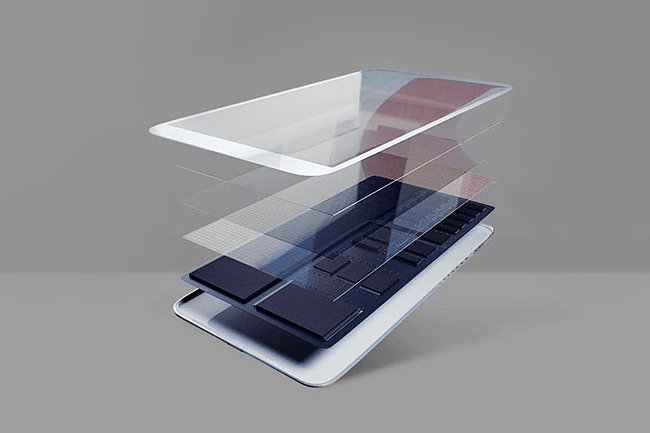
The “fused glass housings” described in the patent would be made by fusing pieces of glass together into a cohesive, all encompassing casing that would cover and protect the device. The patent says that the thick edges of planar and peripheral glass can be fused together and then machined down to the desired thinness. Starting with a thick piece of glass would supposedly ensure that the two edges fuse together permanently without risk of damage.
Weak points in the glass casing would be reinforced by fusing raised glass features to the planar members. Ribs would also be placed inside to protect against stress fractures from flexing glass. Buttons and other ports would be cut out of the device’s glass housing. Although one part of the patent hints at an entirely transparent glass device, another section says that the bottom half of the glass could be tinted with different colors to hide the battery and other less attractive components. The edges could also be “roughened” to reflect and scatter light like crystal.
The patent says this new technology could be used for future iPhones, iPads, and other Apple devices like TVs and music players. One of the designs shown in the patent shows a music player with rounded edges and a flexible, curved display.
In recent years, Apple seems to have added more aluminum to its designs and less glass. The iPhone 4 and 4S were the last of its iPhones to feature glass backs. However, if the company is interested in making its devices look even more distinctive than before, this new all-glass housing could do the trick. It’s unclear whether Apple will use the technology in the near future, or if it’s just another futuristic dream patent that will never become reality.


